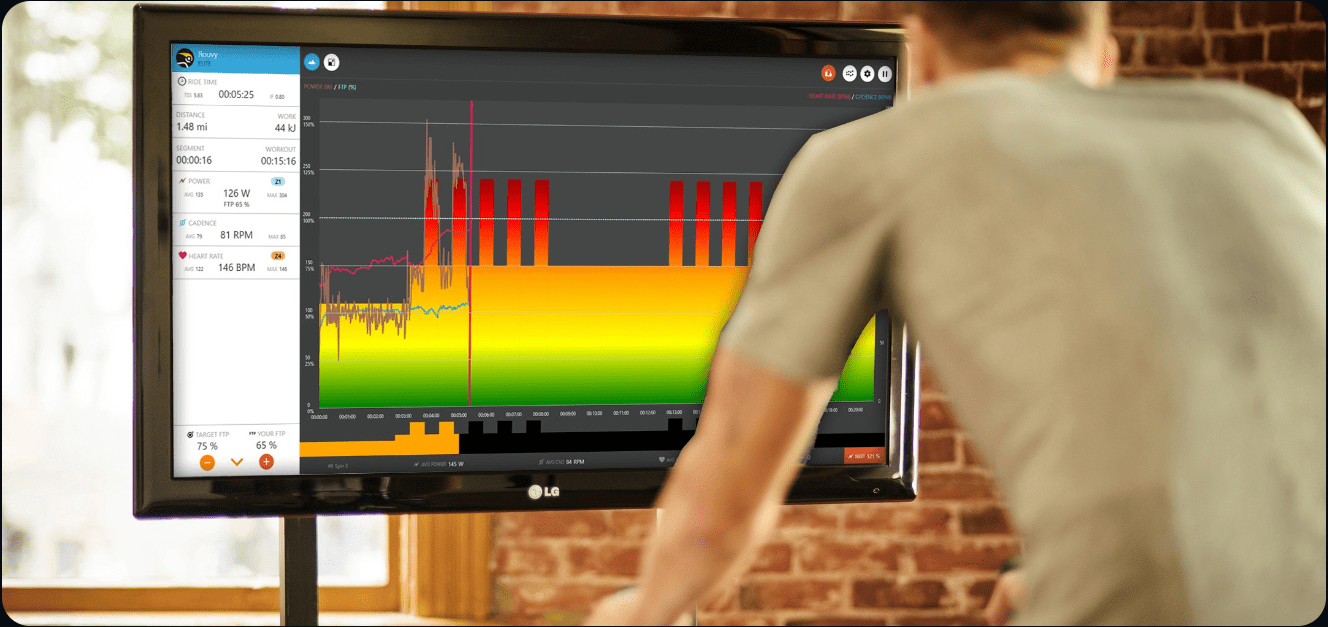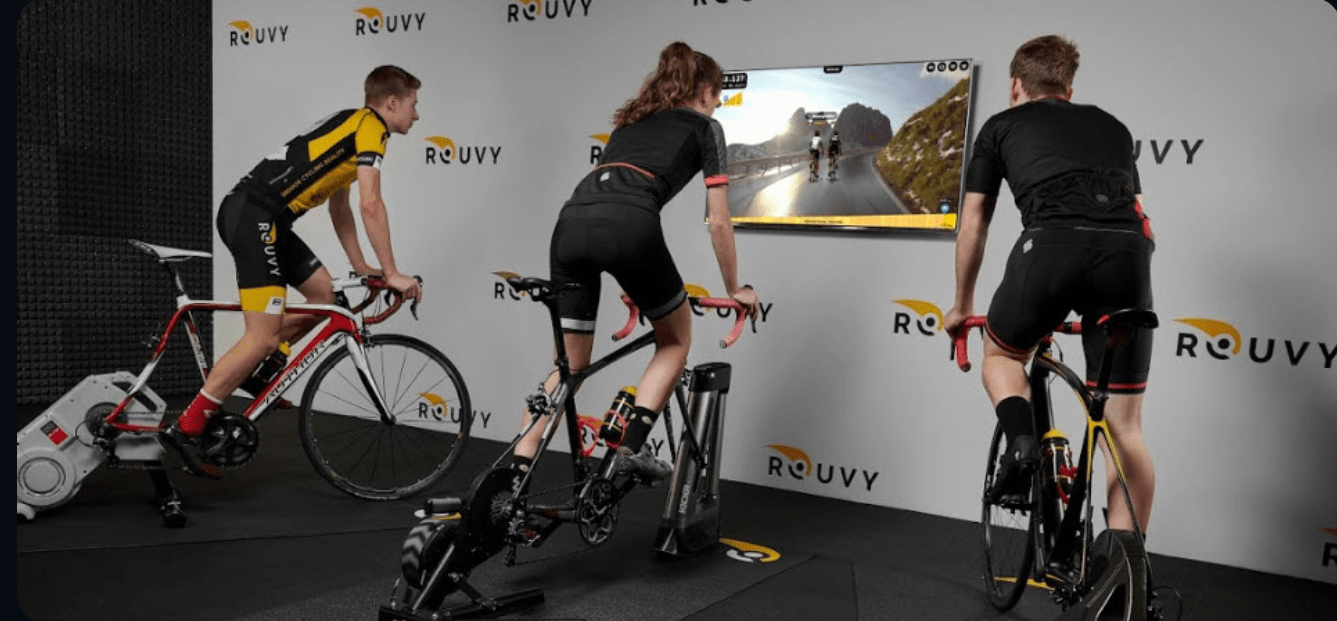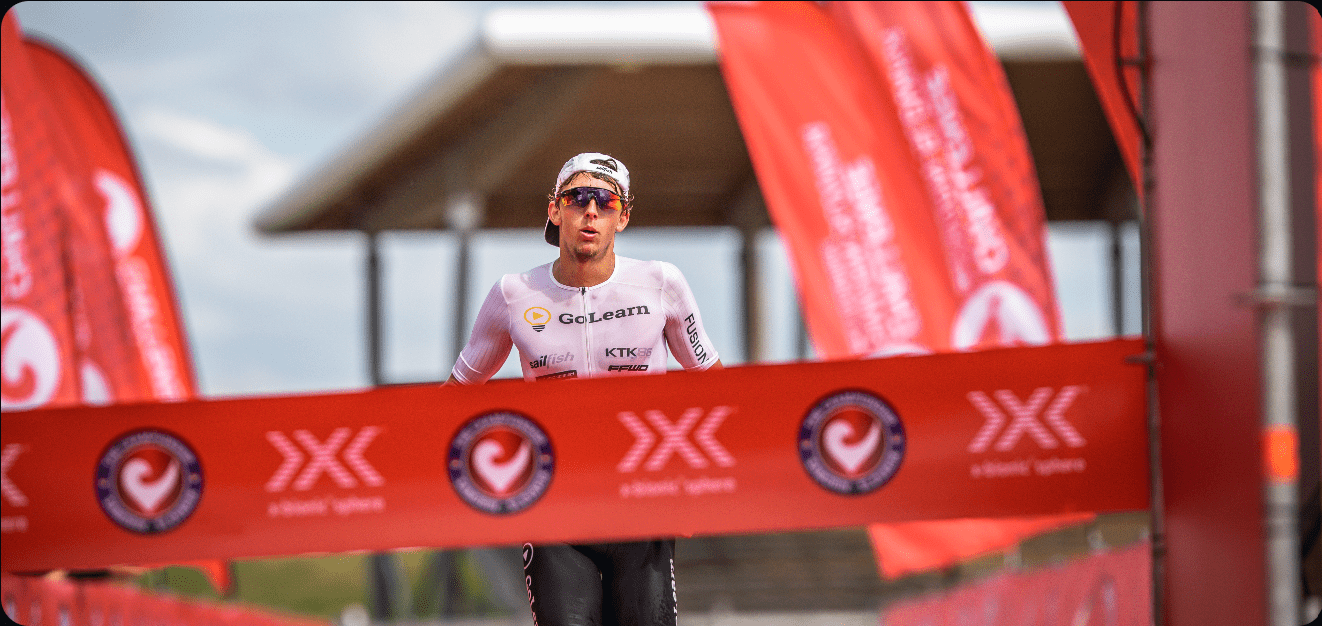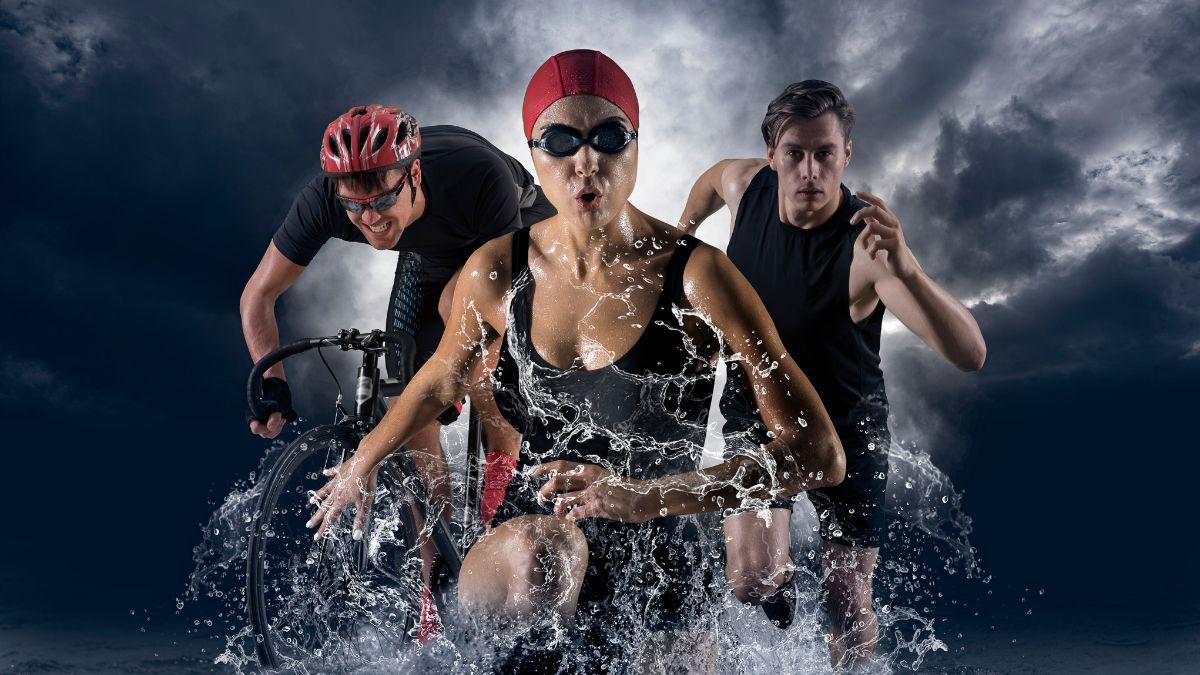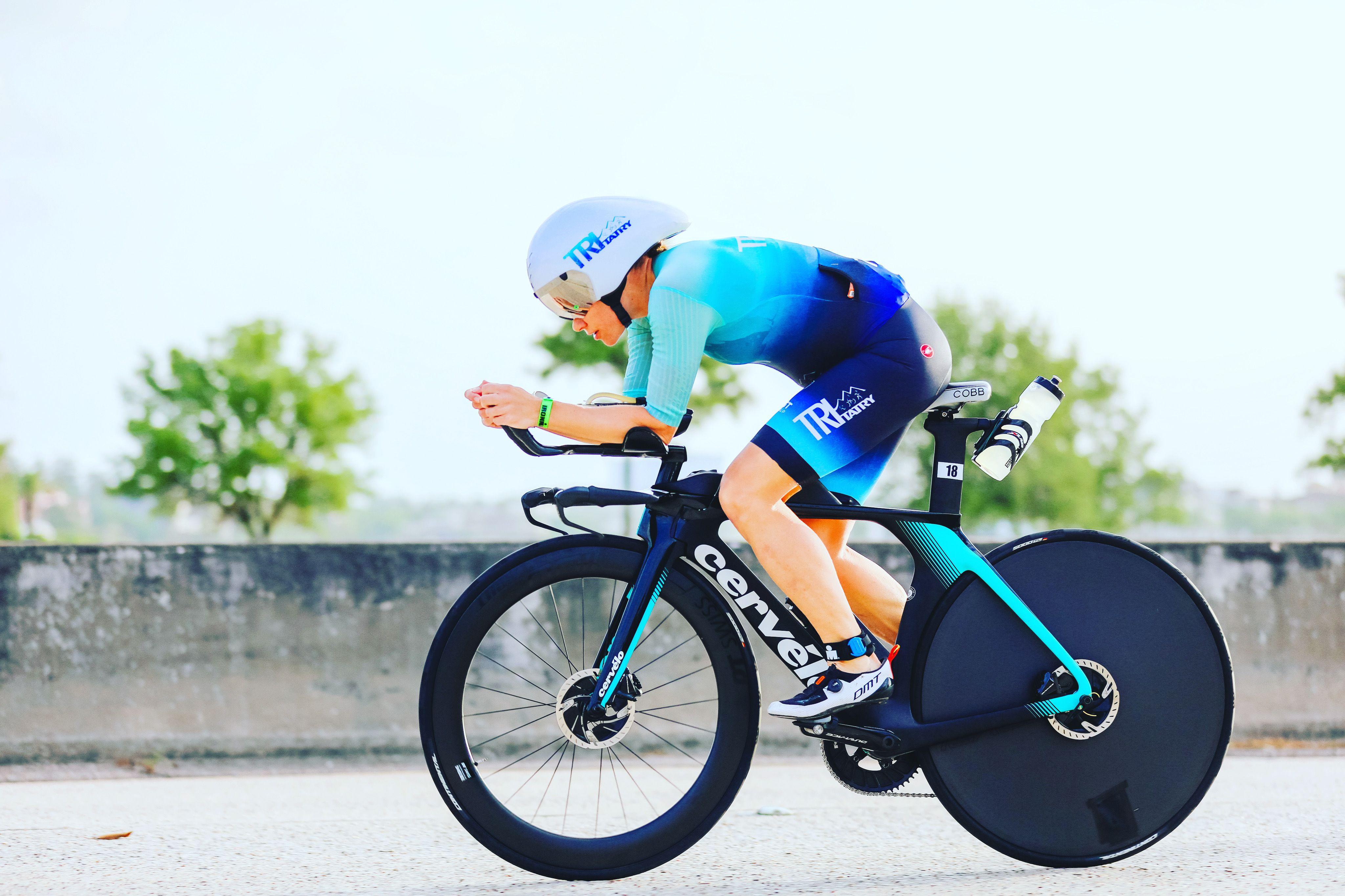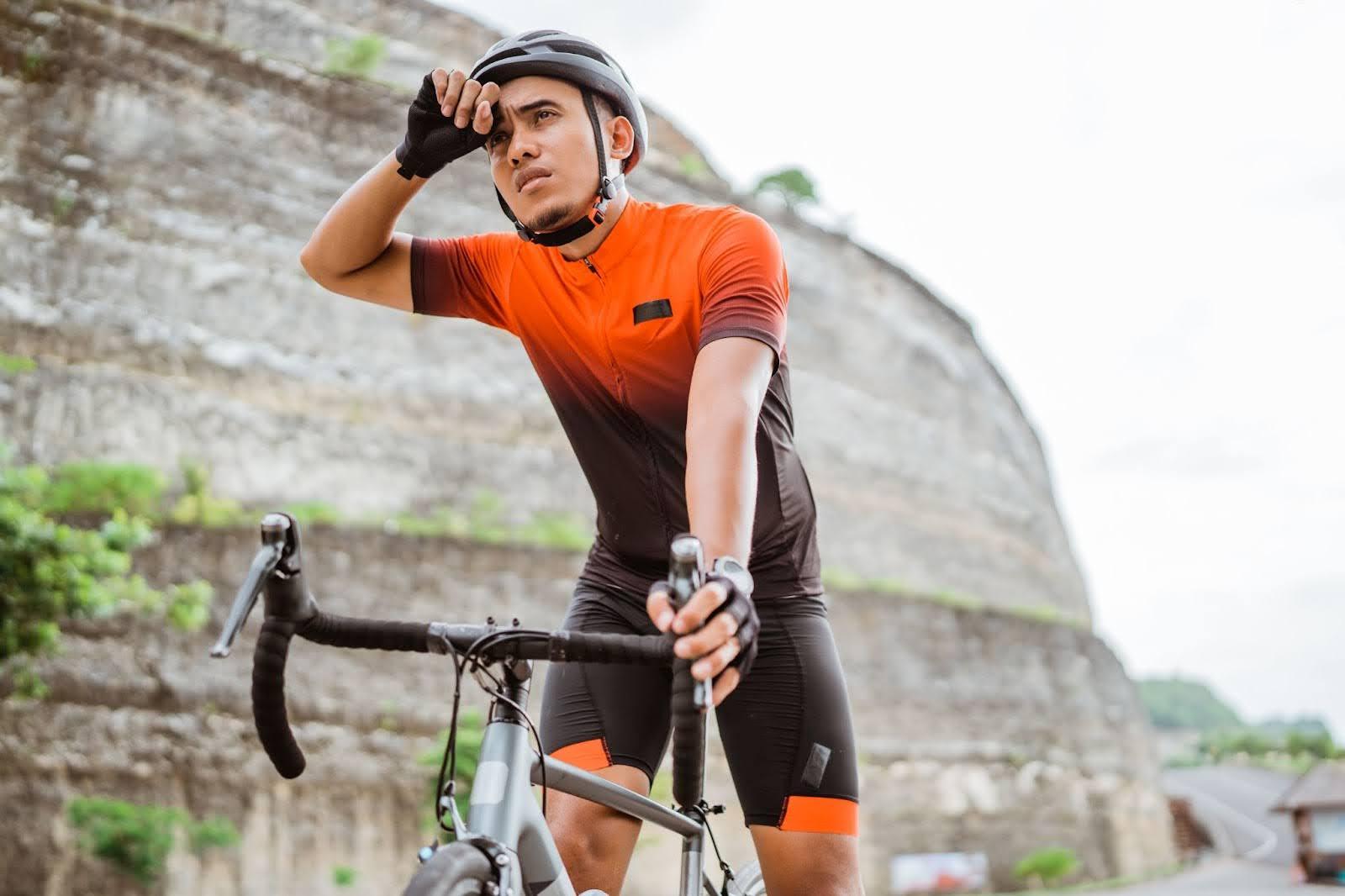Your First Triathlon Starts With the Right Bike
Choosing the best beginner triathlon bike is a big step and perhaps the most important one for a newbie triathlete. Swimming and running are important, but the bike leg takes up the most time, and a bad bike choice can lead to discomfort, fatigue, or even injury. Getting it right helps you train better, race smarter, and enjoy the sport more.
Do You Really Need a Triathlon-Specific Bike?
When looking for a beginner triathlon bike, you'll soon come across the debate about road bikes vs triathlon bikes. A triathlon bike (also known as a TT bike or time trial bike) is designed for maximum aero gains and speed. It has a more aggressive riding position, aero bars, and geometry to reduce air resistance or drag during the cycle.
However, many triathletes find that using a standard road bike is a good bike choice for triathlon because it is more versatile and comfortable to ride. A road bike can be used for group rides, training sessions, and even racing. With the right upgrades, such as clip-on aero bars and a tri saddle, the bike can also be used for triathlons. A triathlon bike for beginners can be an expensive investment and quite limiting if you're not racing regularly.
Upgrade to a tri bike once you're comfortable with bike handling, longer rides and time trials. Entry-level tri bikes can offer the perfect balance of value and performance.

Road Bike vs Triathlon Bike for Triathlon: Pros and Cons
Both bikes have their strengths and trade-offs, especially for beginner triathletes. Let's take a closer look at the pros and cons to help you decide what's right for your first race - and how you could use it further down the line.
Triathlon Bike: Built for Speed, Not Versatility
A triathlon bike is designed to go faster with less effort, especially in time trials and triathlons. The geometry is more aggressive, putting you in an aero position to reduce air resistance during the cycling leg. Most come with aero bars and other adjustments to save energy for the run.
The Pros:
Aero advantage: Every detail - from the frame shape to the riding position - is built for speed.
More efficient energy use: Designed to save your legs for the run by shifting the muscle workload.
Suitable for racing: Perfect for flat, straight courses where aerodynamics matter most.
The Cons:
Not comfortable: The aggressive position can be uncomfortable, especially for longer distances, if you're still building fitness.
Not very versatile: Not suitable for group rides, climbing or casual riding.
Expensive: Entry-level triathlon bikes are more expensive than similarly specced road bikes.
It takes time to get used to the aero bars and geometry, which can feel weird at first, especially on technical terrain or descents.
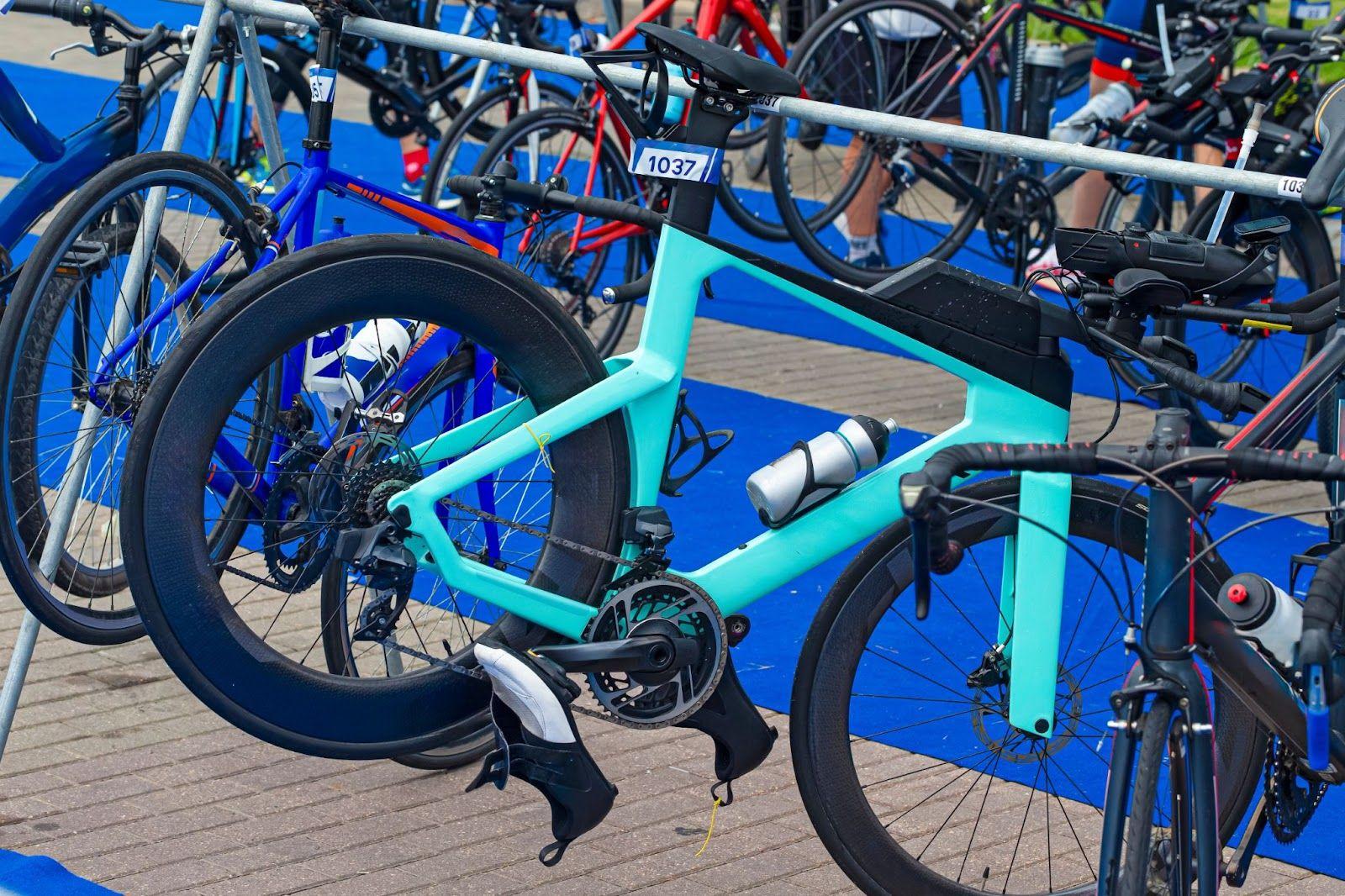
Road Bike: A Smart First Step into Triathlon
Many new triathletes start with a road bike for triathlon because it's more forgiving, easier to handle and cheaper. You can use it for training, commuting or group rides - and then add clip-on aero bars, swap the saddle and adjust your fit to make it more race-ready.
You can also convert a road bike into a triathlon setup with a few performance tweaks. Models with hydraulic disc brakes, carbon frames and reliable groupsets offer a perfect balance of speed and comfort for longer training sessions. Some riders also look for aero wheels like DT Swiss ARC for extra gains.
The Pros:
Versatile and comfortable: Good for training, casual riding and racing.
Budget-friendly: There are many entry-level and cheap bikes in the road bike category.
Easier to handle: Especially useful for technical courses, hills or riding in a pack.
Upgradeable: With a bit of tweaking, a road bike can become a triathlon bike for beginners.
The Cons:
Not as aero: You might need to ride harder to maintain your speed in headwinds or on flat courses.
Needs modifications: To get the most out of it for triathlon, you'll probably need to invest in a few upgrades.
Not as run-friendly: Road bike geometry requires different muscles, which can make the transition to the run a bit tougher.
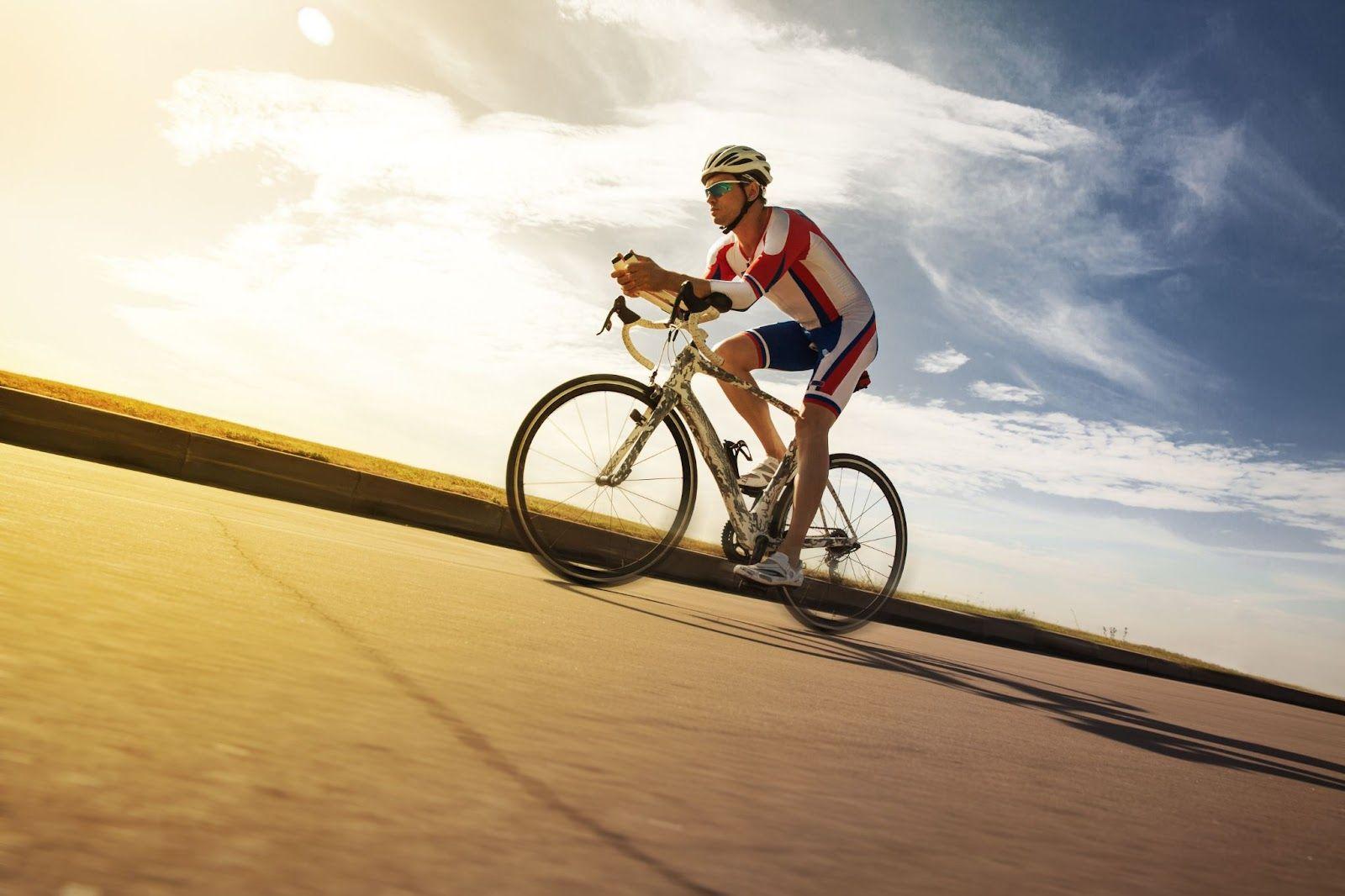
How to Choose the Best Beginner Triathlon Bike: Features That Matter Most
When buying the best beginner triathlon bike, focus on fit, comfort, and performance. The bike geometry should suit your body and riding goals. Bikes with aggressive geometry can be uncomfortable over long distances.
Your gearing setup is worth looking closer at: compact chainsets (mainly used for hilly courses) and wide-range cassettes are suitable for different route profiles. Weight is also important, but only up to a point. Lighter bikes climb well, but comfort and fit are more of a priority to consider.
Frame material affects both performance and price. Aluminium frames are cheaper and durable, while carbon frames are lighter, smoother, and offer more aero advantages. These materials are often found in higher-end beginner tri bikes. Keep in mind, too, that Shimano 105 or Shimano Ultegra are good value and reliable groupsets.
Flat bars are standard on hybrids but won't help you in a triathlon; look for drop bars or clip-on aero bars for an aero riding position. A professional bike fit can also make a big difference in comfort and power output.
Best Beginner Triathlon Bikes
When you're looking for the best value in a bike, several manufacturers offer bikes for under €1,500 or €2,000 that deliver both performance and affordability. The Canyon Speedmax is an entry-level tri bike that can provide those critical, inexpensive aero gains. The Cervélo P Series is yet another excellent example of a beginner triathlon bike.

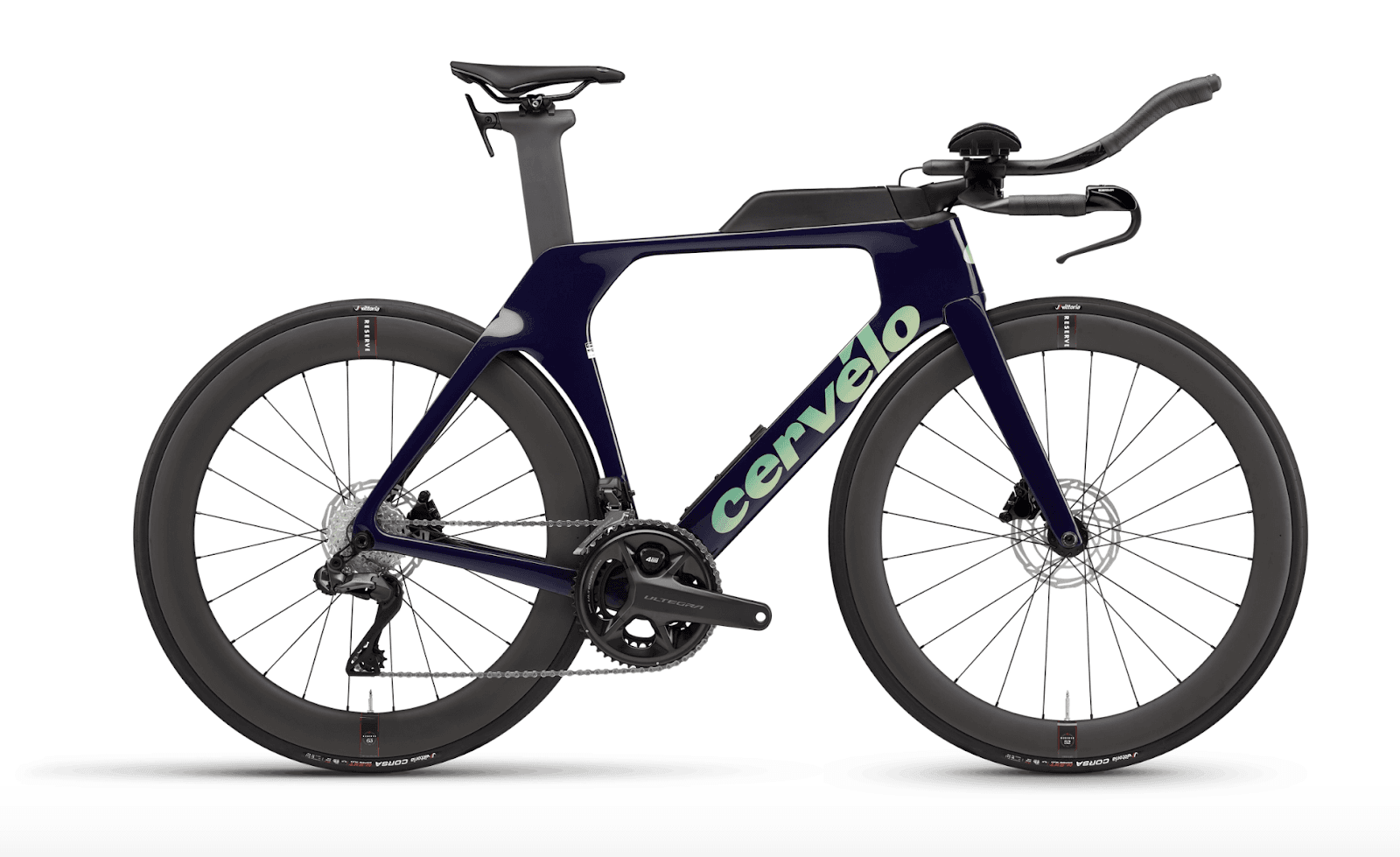
How to Buy: New vs Used, In-Store vs Online
That first bike purchase can be a stressful experience. Peace of mind comes with a new bike, but that doesn't mean you can't cut costs and find great deals on a used bike. You can find some fantastic deals on Facebook Marketplace, at your local bike shop, or on cycling forums. Inspect the bike closely, especially around the bottom bracket, brakes, and frame, for wear and tear. Time trial bikes with unknown service histories are worth taking a closer look at for that reason.
The biggest factor is getting the right bike fit. That's where size charts, online fit and measurement calculators and professional bike fitting studios come in handy. A test ride at your local bike shop can make a big difference. One of the most common mistakes beginner triathletes make is choosing a bike size that's either too big or too small just because it was a good deal. Your first bike should fit well and feel stable on both short and long distances. That stability is what will keep you coming back to your bike - and keep you confident while riding on it.
Must-Have Accessories to Get Started
A starter tri bike isn't complete without a few essential items. You'll need clipless pedals and shoes for better power transfer and efficiency. A good-quality saddle can make your ride more comfortable in the tri aero position.
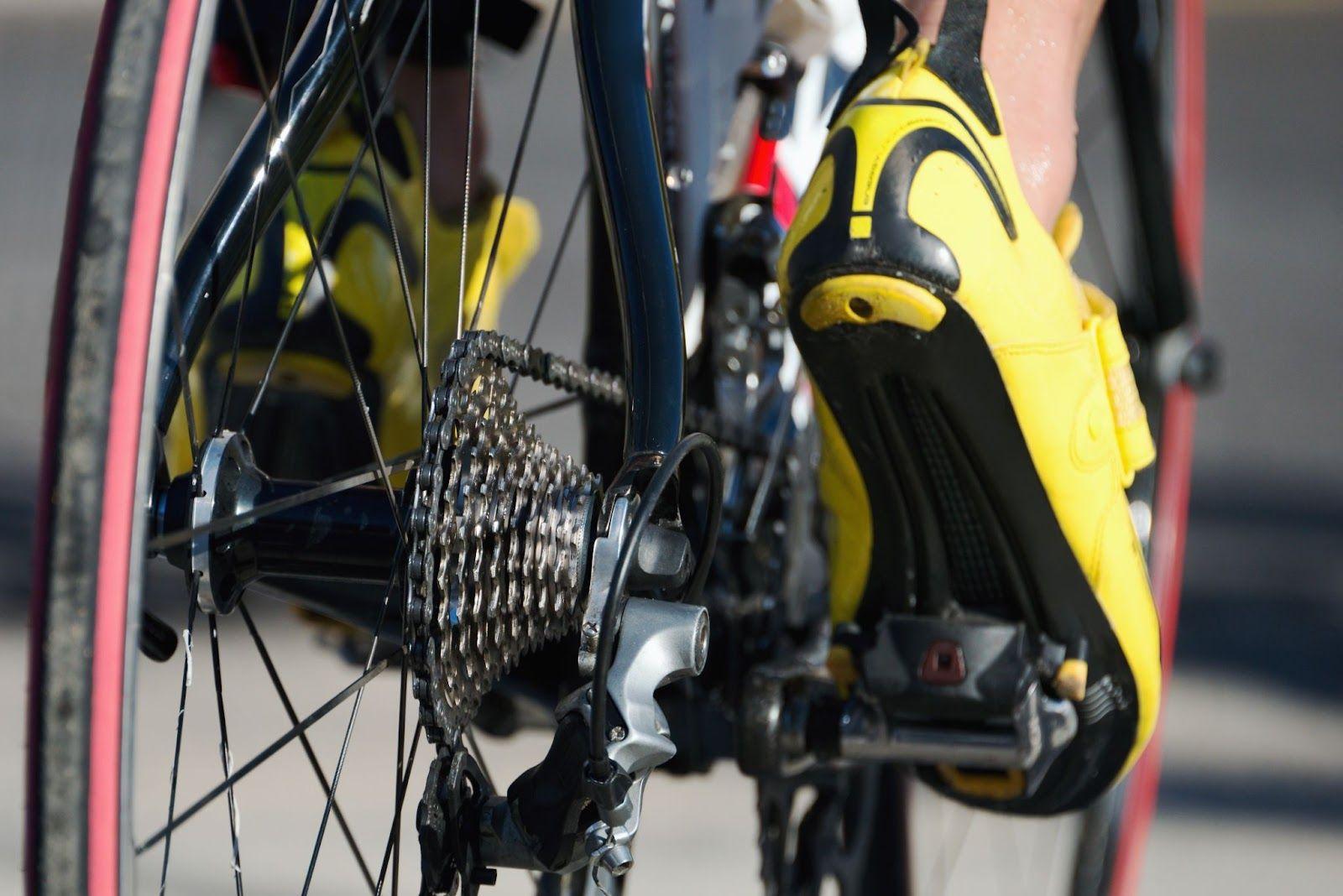
Don't take shortcuts when it comes to safety - get a helmet that meets quality standards. It is prudent to have a basic tool kit, spare tubes, and a pump. Make sure your bike has either disc brakes or well-maintained rim brakes for consistent stopping power.
Mistakes Beginner Triathletes Make When Choosing a Bike
One of the biggest mistakes is overspending on a tri bike with fancy space-age features you don't need yet. Another is not knowing what size bike it is, ignoring fit and comfort, which can ruin your first long ride or race.
Don't buy the first bike you see at the bike shop or online. When looking at different price points, understand the trade-offs between different frame materials, brake types (rim brakes vs. hydraulic disc brakes), and component levels. Don't fall for the marketing hype; instead, focus on what suits your riding goals.
A few reasons beginner triathletes struggle in their first triathlon can often be traced back to an ill-fitting bike, a heavy setup or overlooking the riding position. Choosing the right bike is more important than chasing aero gains with the wrong bike size.
Many also underestimate how much indoor training can prepare them for real-world conditions, especially when using a platform like ROUVY. A route recon and focused training on your bike with an indoor trainer on the actual triathlon course can be invaluable!
Ride with Confidence: Your Triathlon Journey Starts Here
When choosing a triathlon bike for a beginner, performance, price, and comfort are worth noting. First and foremost, focus on a bike that fits and works well, and you can train on. Whether you go for a quality road bike or a triathlon bike, prioritise comfort, strategic upgrades, and the bike's future use.
The ride quality, aero position, brakes, and frame size will determine your confidence and endurance. Go to your local bike shop, ask questions, and test ride multiple options.
Bonus Tip: When to Upgrade from Road to Tri Bike
Once you've done a couple of races, feel confident using aero bars, and are planning longer-distance triathlons—or you want to get faster - then it might be time to upgrade from a road bike to a dedicated triathlon bike. By then, you'll know what features matter to you, what kind of fit works, and whether you're ready to invest in the aerodynamic gains and racing position a TT bike offers. Ride smart, and upgrade when your goals and experience align.
